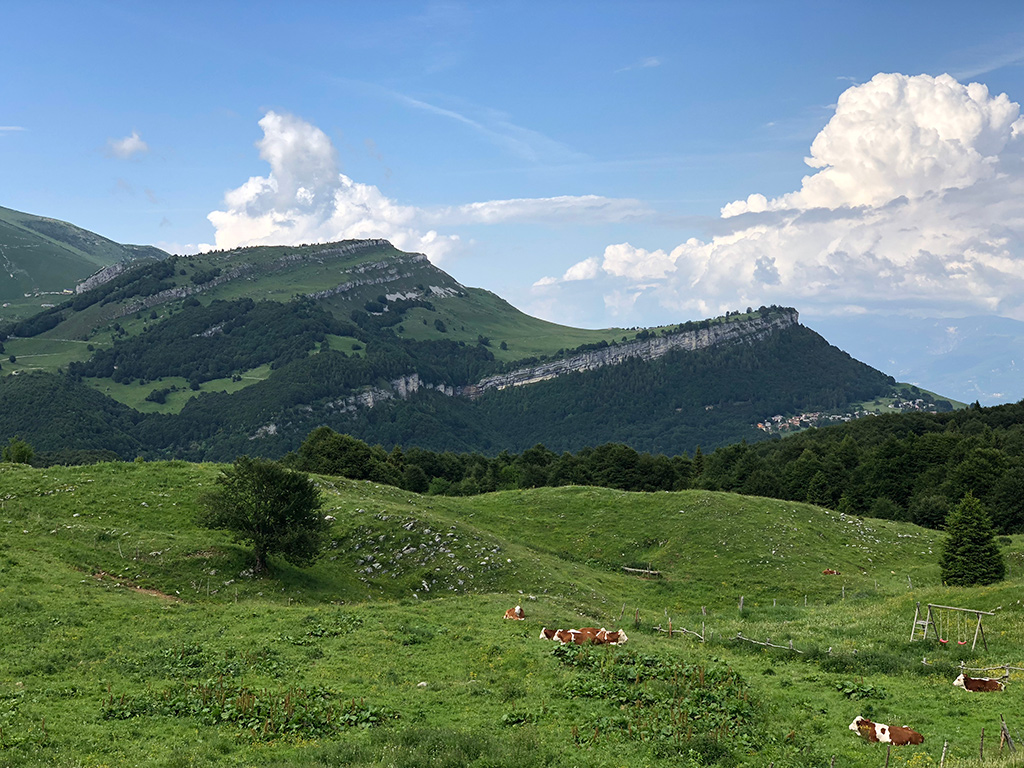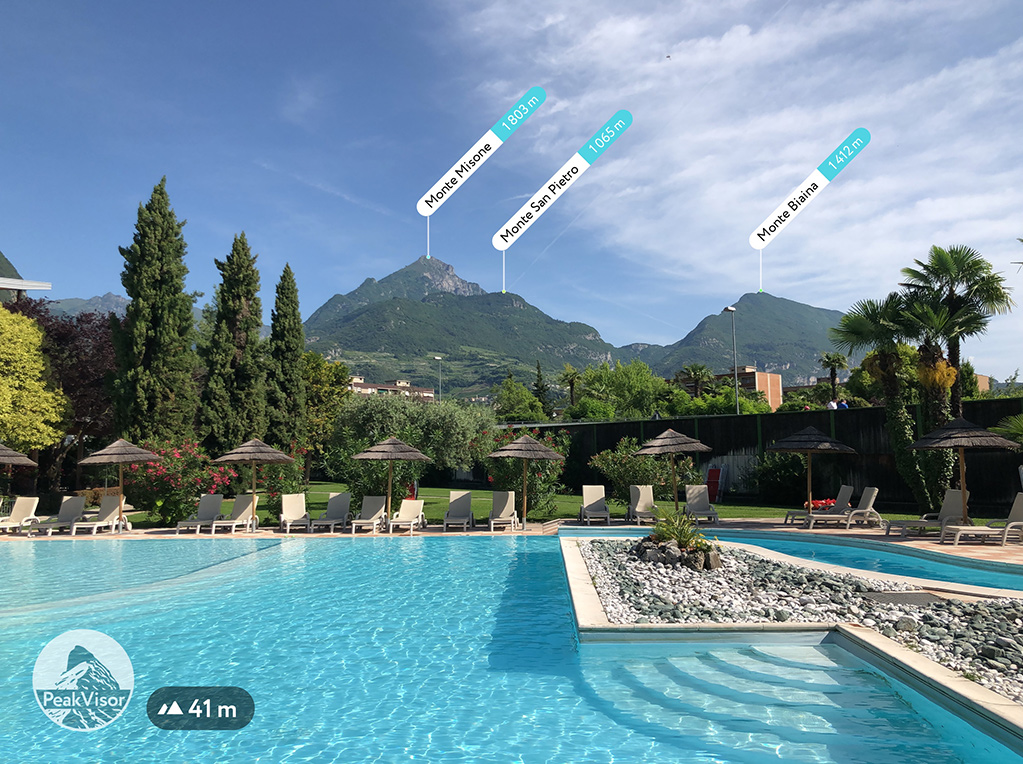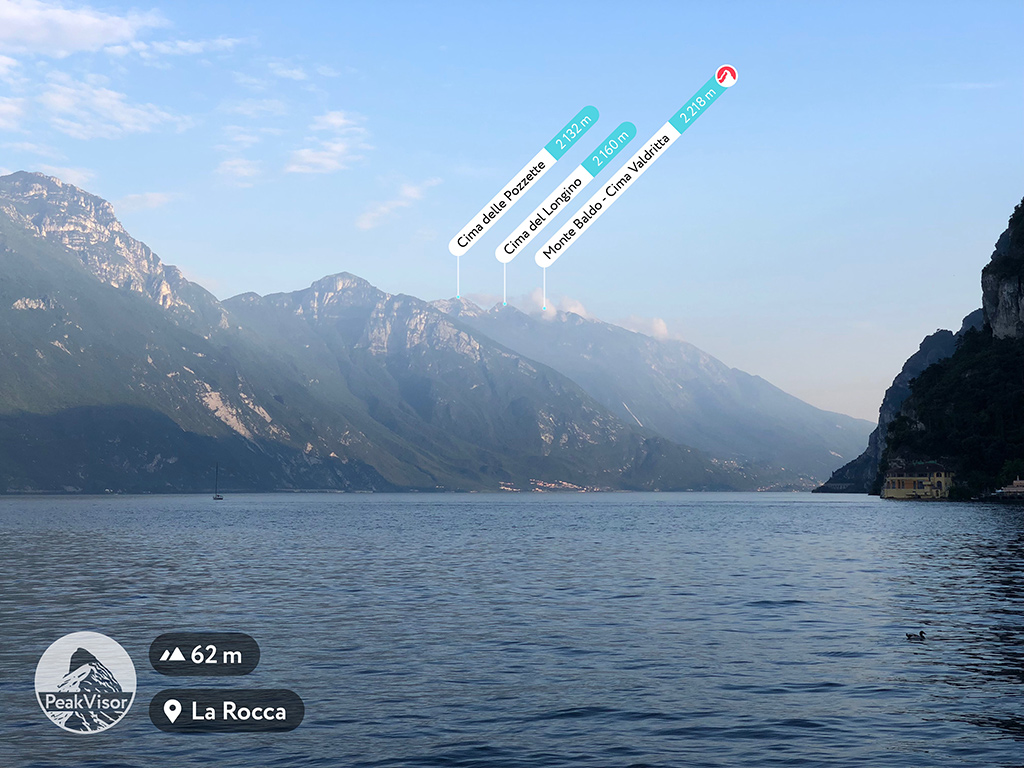Get PeakVisor App
Sign In
Search by GPS coordinates
- Latitude
- ° ' ''
- Longitude
- ° ' ''
- Units of Length

Yes
Cancel
Share ×

Scan the QR code and open PeakVisor on your phone
❤ Wishlist ×
Choose
Delete
The Brescia and Garda Prealps is a large mountain range located in northern Italy in the foothills of the Alps. The two main features of the Garda Mountains, as they are also called, are Monte Baldo (2,218 m / 7,276 ft), the most prominent peak (1,947 m / 6,387 ft) in the range and an ultra-prominent mountain, and the Garda Lake, which is the largest in Italy. There are 883 named mountains in the range, the highest and most prominent of which is Punta Setteventi (2,215 m / 7,267 ft).
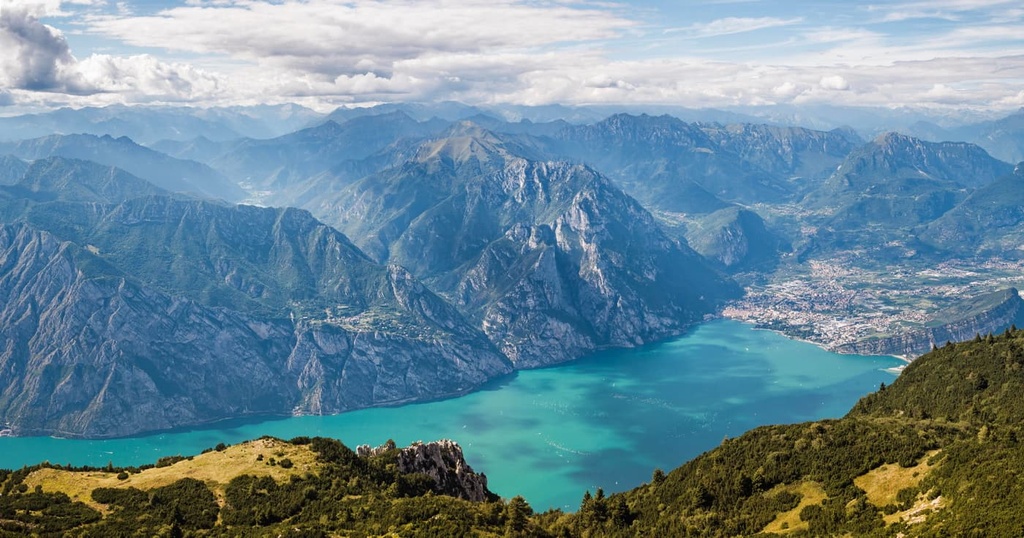
The name of the mountain range consists of two parts, and it refers to two subgroups: the Brescia Prealps and the Garda Prealps. Brescia is one of the 12 provinces of the Lombardy region. Garda is the name of the largest and the most famous lake in Italy, which in Italian is called Benaco.
Here’s a bit more information about the origin of the names of this mountain range:
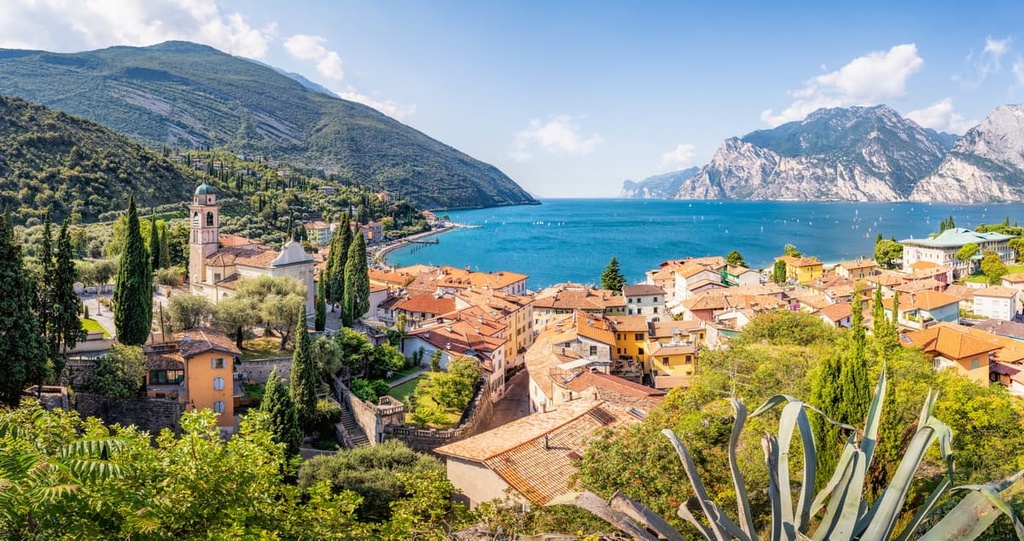
Ultimately, the Brescia and Garda Prealps are the foothills of the hilly province of Brescia and of Garda Lake, which has many capes.
There is an alternative name for the range as some call it the Garda Mountains or Garda Prealps. These names come from the classification system of the German-Austrian Alpine Club (AVE), which is used to classify and organize the different subranges of the Alps.
The name of the range in Italian is Prealpi Bresciane e Gardesane or Prealpi Gardesane. In German, they are called Gardaseeberge.
The Brescia and Garda Prealps are both located in northern Italy. In addition to the province of Brescia, this mountain range is also partly located in the province of Verona in the Veneto region on the eastern side of Garda Lake. It is also located at the southern tip of the province of Trento (north of Garda) in the Trentino-Alto Adige / South Tyrol region.
The exact boundaries of the range are defined by the Oglio River, Iseo Lake, and Val Camonica in the west; Val Giudicarie in the north; Adige River in the east; and the Po River Plain in the south.
In some maps created by the German-Austrian Alpine Club, the range is slightly smaller in the west, and it ends in the Val Trompia before reaching the Camonica Valley.
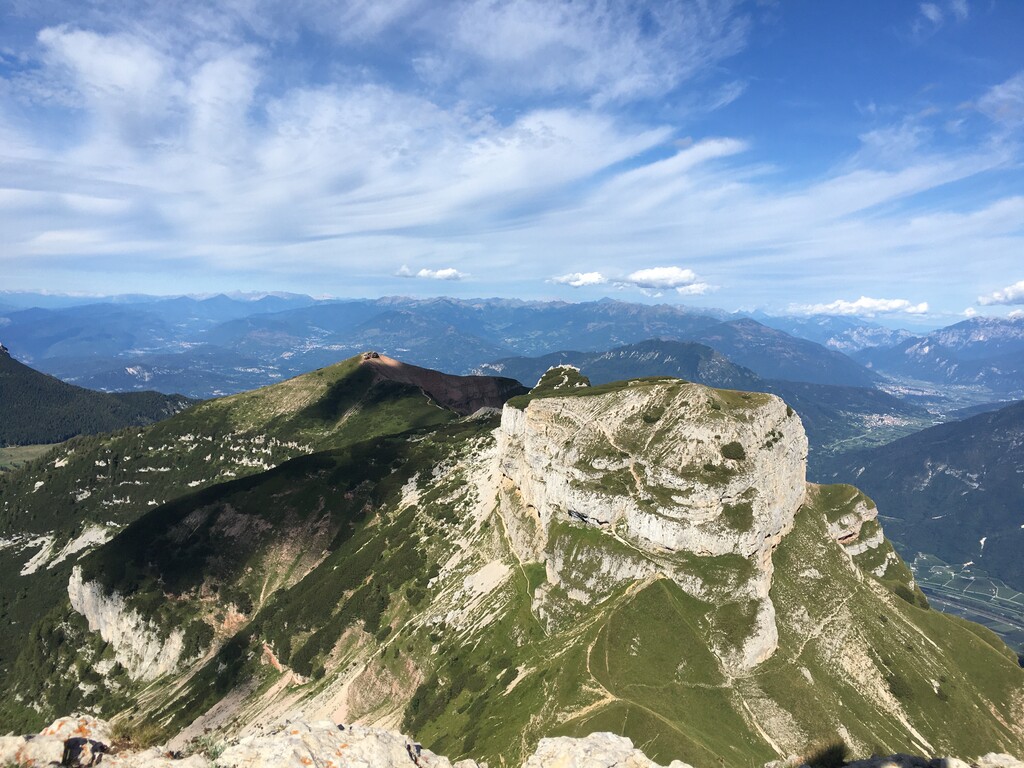
The Garda Mountains are bordered by the following other major ranges: the Bergamasque Alps and Prealps and Bergamo Mountains to the west, the Adamello-Presanella Alps and the Brenta Group of the Southern Rhaetian Alps as well as the Fiemme Mountains (or the Dolomites in the SOIUSA system) to the north. The range is also bordered by the Venetian Prealps (Vicentine Alps in the AVE system) to the east and southeast.
The cities of Brescia, Desenzano del Garda, and Verona are the three largest communities located in the southern foothills of the Garda Mountains.
From the north, you can get here from Rovereto and Trento, the two largest cities in Trentino province. Another big city in Lombardy, Bergamo, is located just one hour away. The same can be said about Vicenza, which is just one hour from Verona.
The best way to get between these cities by public transport is via Trenitalia trains and buses of Arriva SAB (Bergamo and Brescia), ATV Verona, and Trentino Trasporti.
The geology of the Brescia and Garda Prealps is so diverse that it would take a separate guide to describe it in all detail. So here we will focus on its main mountain, Monte Baldo.
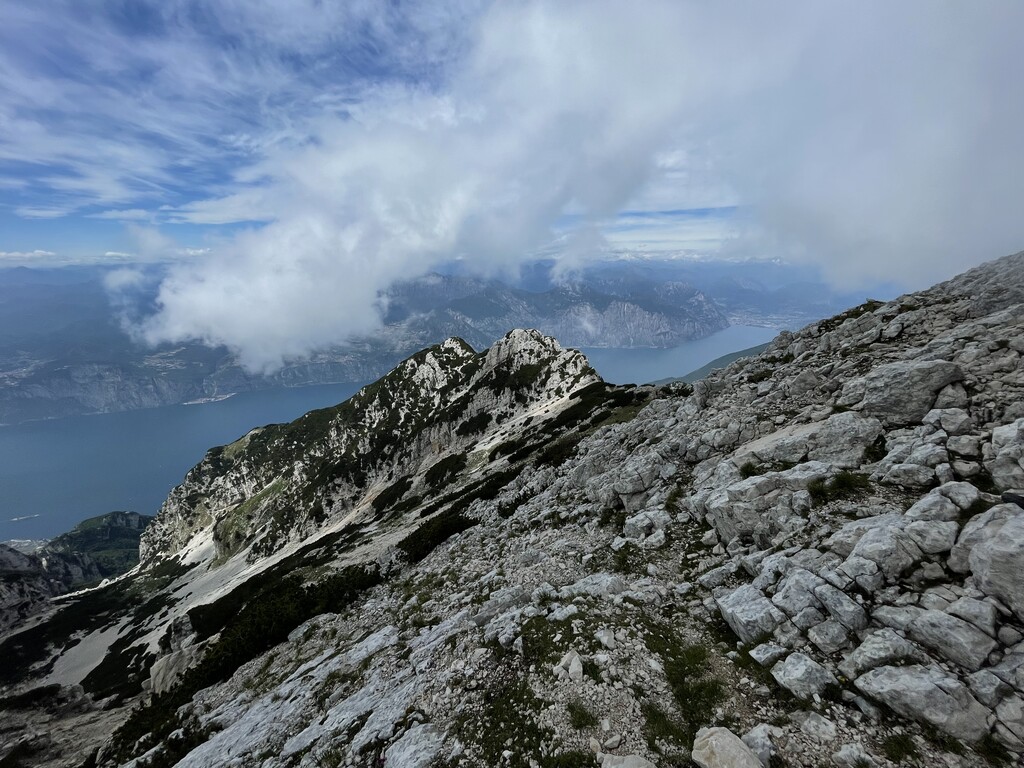
Monte Baldo consists mainly of sedimentary rocks, particularly limestone and its variety of dolomite, which is where the name of the nearby world-famous Dolomites mountains comes from. These rocks were formed between the Triassic and Oligocene in the tropical Tethys Ocean, which covered the area at those times.
There are also isolated outcrops of basalt and tuffite in the range. The existence of the latter suggests the presence of volcanoes in the distant past.
The uplift of the Garda Mountains began 40 million years ago as part of the Alpine Orogeny. This orogeny occurred as a result of the collision of the European and African tectonic plates, which also formed the rest of the Alps.
I have already named two main features of the Brescia and Garda Prealps' landscape: the mountains themselves starting from the enormous Monte Baldo and Garda Lake. The mountain range is actually located around the lake and surrounds it from all sides except the south.
In my opinion, the Garda Mountains would not be as we know them today without their namesake lake, and vice versa: the lake would have lost its beauty if it was not surrounded by such great mountains.
If you have been to Garda at least once, you know that in the south part, the lake is flat and resembles a sea, but the further you move north, the steeper its shores become. In the northernmost part of the lake, it turns into what looks like a narrow fjord.
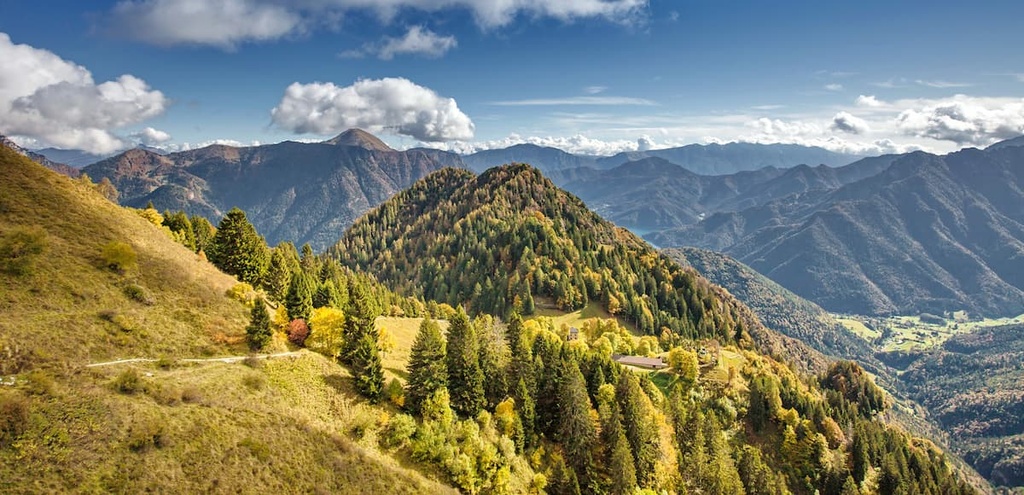
Located to the west of Garda is Iseo Lake, which is smaller and less popular among tourists, especially from abroad. In the words of the founder of PeakVisor, "while the Garda part of the range doesn’t need any introduction, the Brescia part is often overshadowed by such a noble neighbor.”
This is due, at least in part, to the fact that the A22, which leads to Brenner Pass and the border with Austria, guarantees easier access to Garda Lake than to the Brescia Prealps area. But rest assured that Iseo and the mountains of the Brescia province have much to offer, too, including majestic vistas, spectacular views, and delicious cuisine.
Another remarkable feature of the local landscape is the several islands that exist in the two aforementioned lakes: Sogno, Olivo, Trimelone, San Biagio, and Garda in Garda; and Loreto and Monte Isola in Iseo. The islands are best viewed from one of the surrounding peaks.
But there are more lakes in Brescia and Garda Prealps than you can imagine. Another magnificent alpine lake, Idro, is located exactly in the middle between Garda and Iseo in the inner part of the mountain range. Not everyone even knows it exists but it is worth visiting. There are many more lakes: Ampola, Cavedine, Cei, Ledro, Loppio, Prà della Stua, Tenno, Tobliner, and Valvestino, among others.
The five main rivers of the Garda Mountains are Adige, Sarca, Chiese, Mella, and Oglio. They form the borders of the range and their respective valleys (Adige, Sarca, Giudicarie, Trompia, and Camonica). Most of these rivers are nature parks with hiking trails.
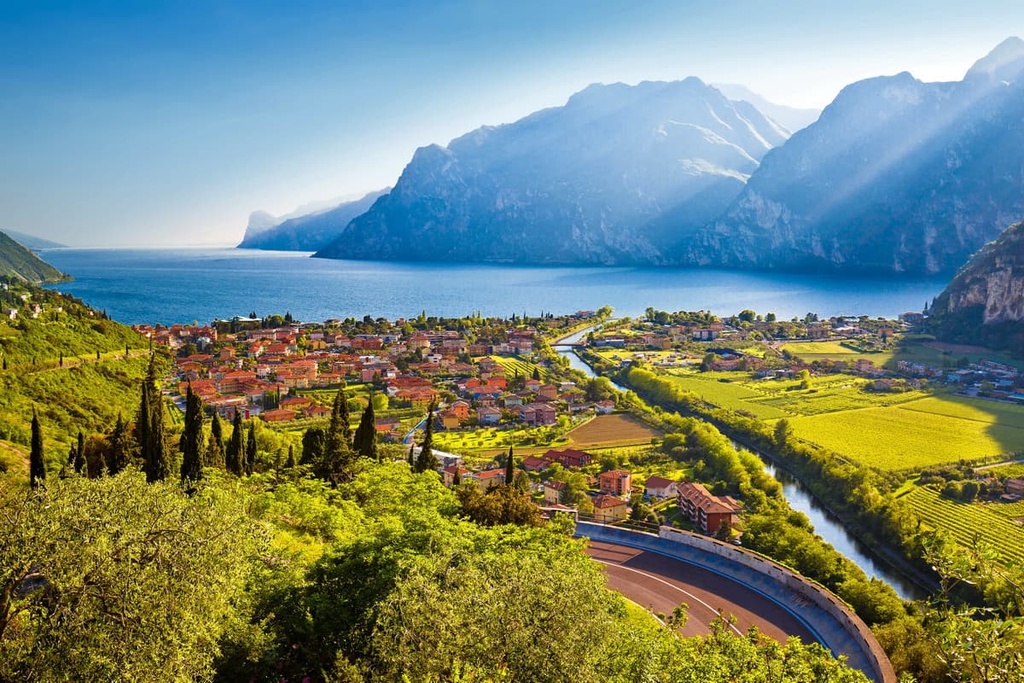
And of course, you can't imagine the mountains without the passes. The five highest are: Crocedomini (1,892 m / 6,207 ft), Tremalzo (1,694 m / 5,557 ft), Maniva (1,664 m / 5,459 ft), Baremone (1,450 m / 4,757 ft) and Colle di San Zeno (1,434 m / 4,704 ft). The passes are traditionally a gathering place for hikers, cyclists, and skiers in winter (if there are pistes).
The Brescia and Garda Prealps is one of the nine large mountain ranges in the Southeastern Alps, which are part of the Eastern Alps according to the Italian SOIUSA Alpine classification system.
In the second popular Alps classification system, which was created by the German-Austrian Alpine Club (AVE), and which covers only the eastern part of the Alps, the mountain range is called the Garda Mountains. In this system, it is a part of the larger Southern Limestone Alps.
The boundaries of the range in both classifications are generally the same. But the Garda Mountains as defined by the AVE system are technically smaller.
The SOIUSA classification system then divides the range internally into two large parts: Brescia Prealps (Prealpi Bresciane also known as Prealpi Lombarde orientali or Eastern Lombardy Prealps) and Garda Prealps (Prealpi Gardesane), which are separated by Valle Sabbia. Each of these subranges or supergroups is further divided into several smaller groups, which are listed below.
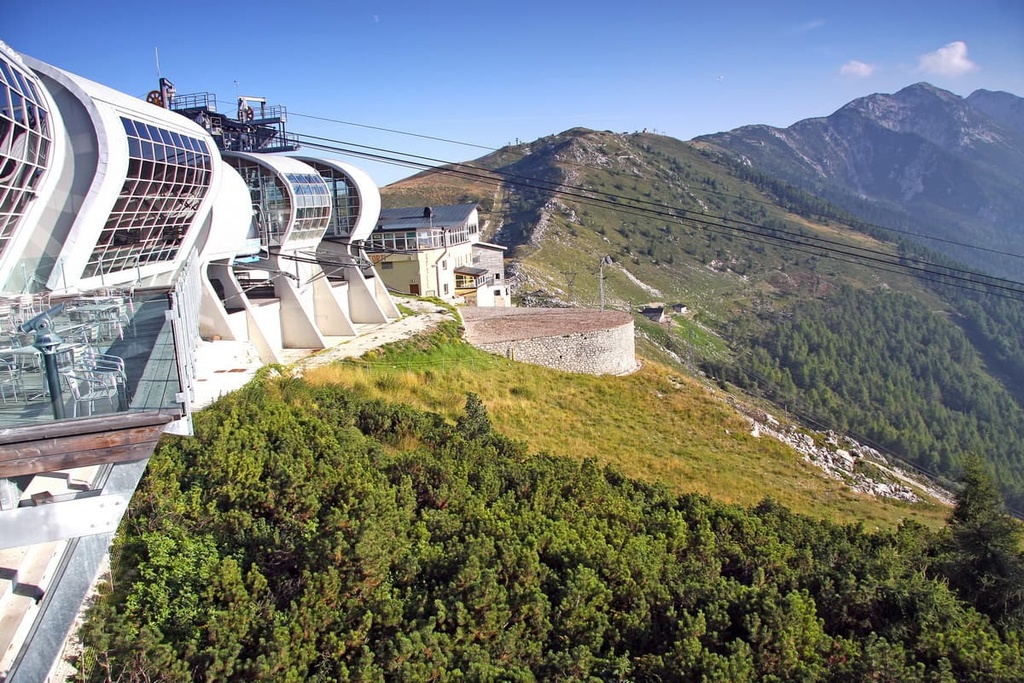
Brescia Prealps
Garda Prealps
With regards to the ranges’ summits, among the 751 named peaks in the Brescia and Garda Prealps, I can highlight the following top 10 mountains in Garda Lake and Brescia province:
Punta Setteventi (2,251 m / 7,385 ft) is the highest peak of the entire mountain range. It is located approximately in the range’s geographical center in Val Trompia, but it belongs to the Brescia section. There is no hiking trail to the summit, but it can be climbed along the Via normale, the easiest climbing route from Goletto del Giogo della Balla (2,129 m / 6,984 ft).
Monte Cadria (2,250 m / 7,381 ft) is the second-highest summit of the range and one of the most beautiful. It is a huge pyramidal-like mountain on the northwestern boundaries in the Camonica Valley. According to some sources, it is the highest peak of Brescia and Garda Prealps, because it is only 1 meter (3.2 ft) behind Punta Setteventi. You can climb to the top of the mountain along the SAT 423 marked hiking trail.
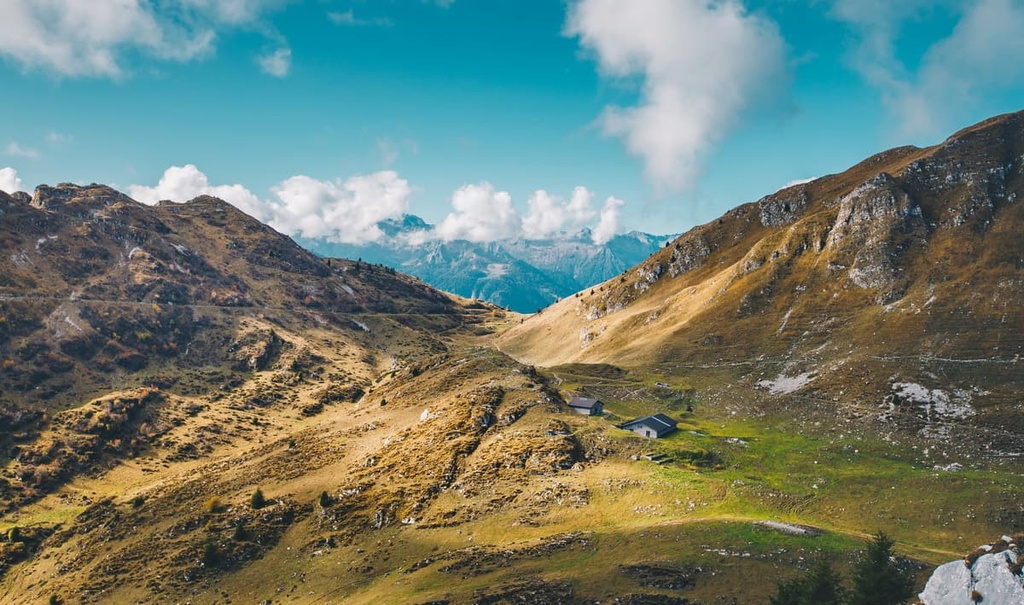
Cima Valdritta, as part of Monte Baldo (2,218 m / 7,276 ft), is the third highest peak of the range, and it is located on the eastern shore of Garda Lake. You can reach the summit and have access to the whole ridge via a cable car from the town of Malcesine, which is located on Garda's shoreline.
It is also one of the two Ultra mountains in the range with a prominence of 1,947 m (6,387 ft). From the top, you can have incredible views of the lake, the surrounding mountains, as well as distant famous peaks like Pizzo Coca, Cima Presanella, and Cima Brenta, among others.
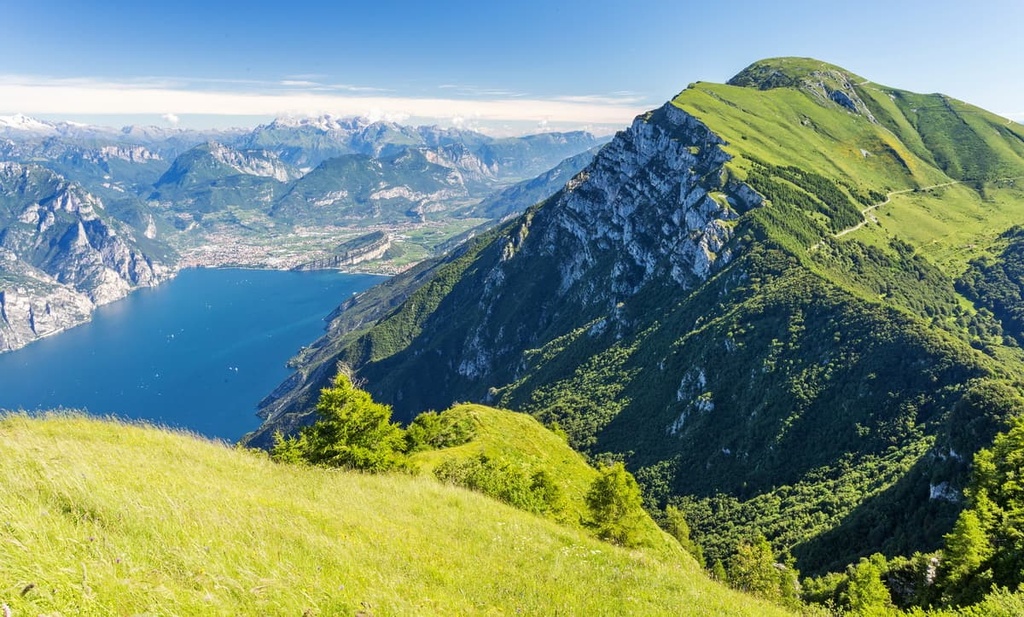
As for the other major peaks in the range, some notable mountains include:
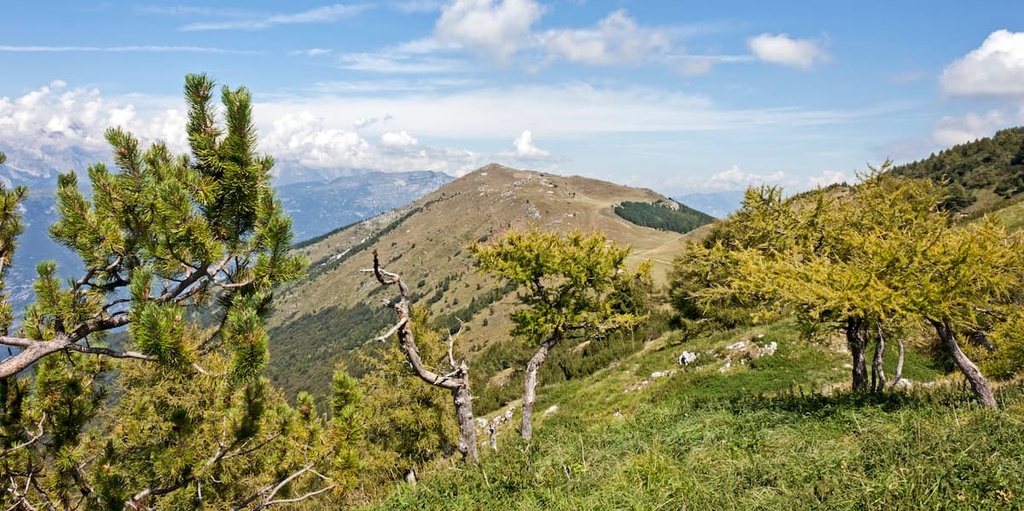
The main hiking areas in Brescia and Garda Prealps are Alto Garda Bresciano Nature Park, which occupies almost the entire western part of Garda Lake; Zone Pyramides Nature Reserve on the eastern shore of Iseo Lake; and Brescia Hills Nature Park in the city of Brescia, Lombardy.
In the Trento province of Trentino-South Tyrol region, you can also find the Monte Baldo Local Nature Park and Tre Cime del Monte Bondone Integral Nature Reserve. Additionally, there is the Biotopo delle Marocche in Sarca Valley.
There are also great and, in some cases, even more famous hiking areas located on the borders of the Garda Mountains range.
For example, you can check out Adamello Nature Park and the larger Adamello-Brenta Nature Park in the Dolomites. You can also head out to see Park of Sebino (Sebino is a Latin name for Iseo Lake) and Lake Endine Par, both of which are located between Iseo and Endine lakes in the Lombardy region.
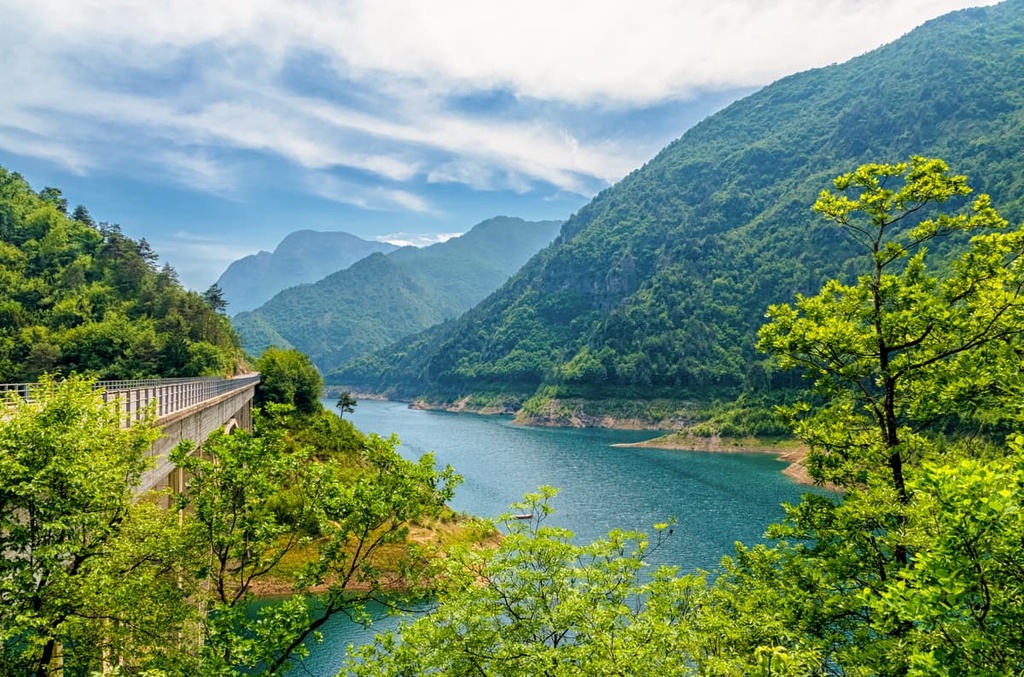
Additionally, Lessinia Nature Park is situated in the main park in the Verona province of the nearby Veneto region. It is located on the southern border of the Garda Mountains and is a part of the Venetian Prealps.
Monte Baldo is a huge massif that you can’t miss while traveling in the area. A day-long ridge trail that travels high above Garda Lake offers views that make one feel as if they are watching a panoramic movie during the whole journey.
Typically the itinerary contains these summits (from north to south): Monte Altissimo di Nago, Cima delle Pozzette, the highest peak of Monte Baldo—Cima Valdritta, and Cima Telegrafo. Alternatively, you could start from the Malcesine cable car top station, which is located not far from Cima Valdritta. If you start here, you can do just a section of the ridge trail.
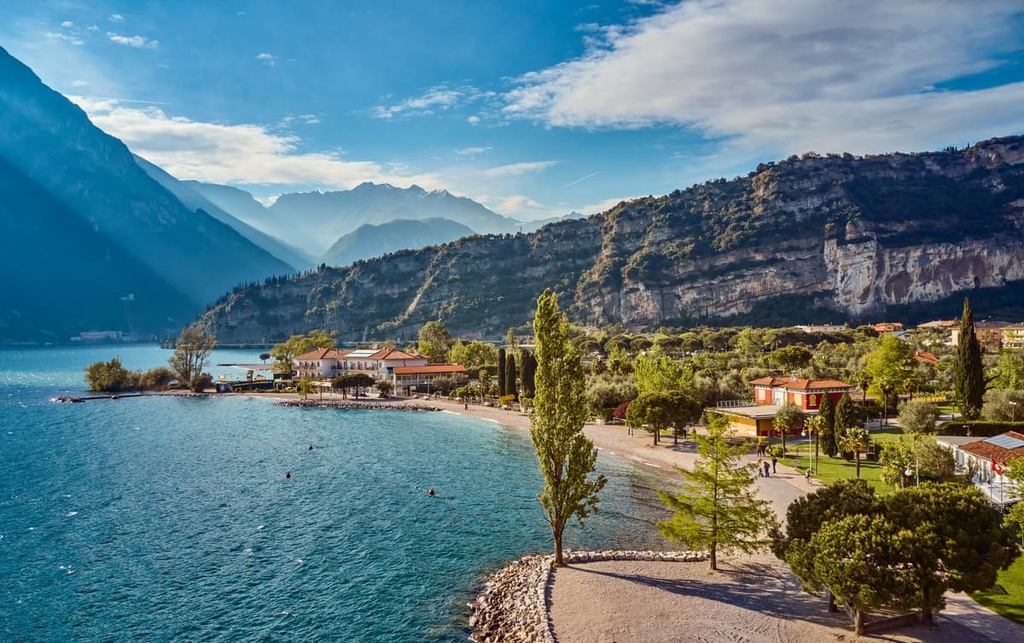
For another hiking option, check out Riva del Garda, a tiny town at the northern tip of Garda Lake that’s immersed in epic scenery. It has not one but several great trails:

Another hiking option is to head to Monte Misone and Monte Stivo. These are two prominent peaks that are located in the northern part of the Garda Prealps. They can both be reached by various marked trails that offer scenic views of the lakes and the surrounding landscapes.
Additionally, you can head to the path between Monte Cogorna and Monte Cadria, which is an all-day high-elevation ridge trail.
Or, you can climb Monte Cornetto of Monte Bondone, which is Trento’s very own ultra-prominent mountain. There is a popular loop trail to the summit, Giro delle Tre Cime del Bondone, that is 10.2 km (6.3 mi) long and has an elevation gain of 761 meters (2,201 ft). Most people complete the trail in 6 hours. From the top, you can see Trento, the Adige Valley, and much more.
There are many trails to check out in the Brescia Prealps, too. One option is the long high-elevation ridge trail that takes you to the range’s highest point, Punta Setteventi. There are many trails to the summit, though, and one option is to traverse over Monte Colombine and Monte Crestoso.
Alternatively, you can take one of the many trails to Monte Guglielmo. These hikes provide panoramic views of Iseo Lake and of the largest lake island in Italy, Monte Isola.

Another great trail in Brescia Prealps is Antica Strada Valeriana (The Ancient Valeriana Road). This hike follows along the whole eastern shore of Iseo Lake for 25 km (15.5 mi).
Before the highway along the lake was built, it was the only road that connected the inhabitants of lowland Italy and Brescia in particular to the Camonica Valley. I recommend hiking the Marone–Pisogne section in two days rather than one via Corna Trentapassi (1,244 m / 4,081 ft). Although Corna Trentapassi is not located on the official route, it offers a spectacular view of the lake.
If you’re looking for a longer route, you can try the Three Valleys Trail (Il Sentiero 3V or ‘Sentiero delle Tre Valli’), which starts in the park in the center of Brescia but goes far away to Monte Colombine via Val Sabbia, Val Trompia, and Val Camonica.
In fact, the trail goes around the entire Brescia portion of the mountain range and it is 120 km (74.5 mi) long, so it’s a great option if you have a week available for hiking. You can, however, hike just the trail’s individual sections. It includes eight stages with both more and less demanding variants. These stages are:
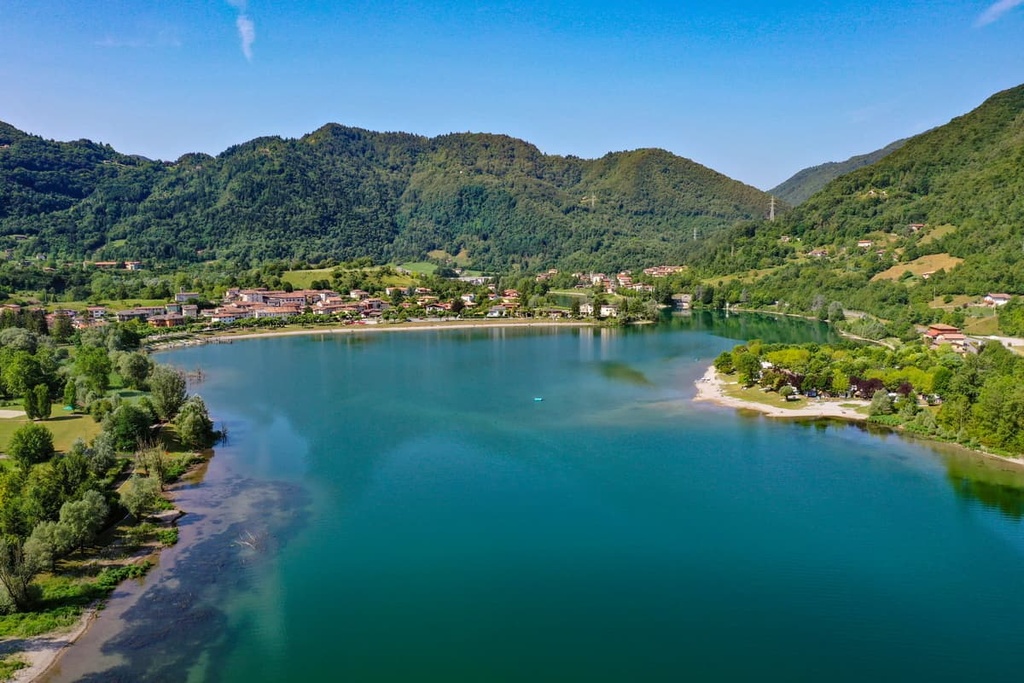
There are also many short and long hiking trails in Brescia Hills Park that are worth a visit if you’re in the area.
There are several great ski resorts in the Brescia and Garda Prealps. Some of the ski resorts in the range are larger than others, so they offer more ski trails. But, at the same time, these larger resorts tend to have many more skiers and much more crowded slopes. Here’s a quick look at the different resorts in the area so you can find your next adventure destination.
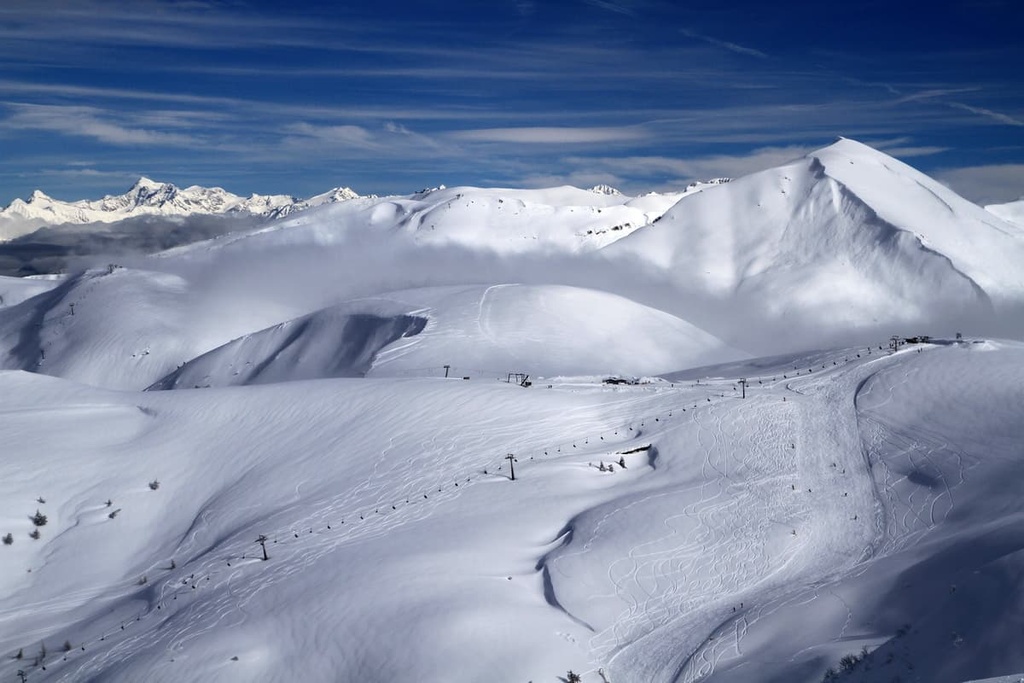
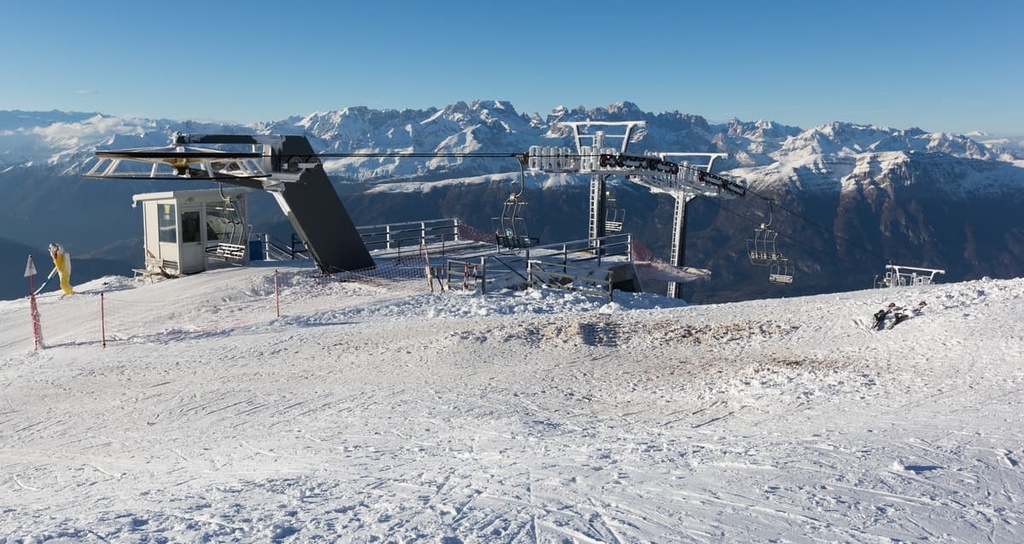
For more information about these resorts or to see what lifts are open and closed in real-time, head to the World Mountain Lifts page in PeakVisor.
During your trip, be sure to check out one of the official tourist centers and info points located in the major cities of Brescia and Garda Prealps:
Infopoint Centro Brescia
Via Trieste, 1 (corner of Piazza Duomo), Brescia, Lombardy, Italy
+390302400357
APT Trento, Monte Bondone, Valle dei Laghi
Piazza Dante, 24, 38122, Trento, TN, Trentino-Alto Adige / South Tyrol, Italy
+390461216000
direzione@trentinomarketing.org
APT Garda Trentino
Largo Medaglie d’Oro al Valor Militare, 5, 38066, Riva del Garda, TN1, Trentino-Alto Adige / South Tyrol, Italy
+390464554444
direzione@trentinomarketing.org
Infopoint Desenzano del Garda
Via Porto Vecchio, 34, Desenzano del Garda, BS, Lombardy, Italy
+390303748726
infopoint.desenzano@provincia.brescia.it
IAT Verona Tourist Information Office
Via Leoncino, 61, 37121, Verona, VR, Veneto, Italy
+390458068680
Infopoint Darfo Boario Terme
Piazzale Luigi Einaudi, 25047, Darfo Boario Terme, BS, Lombardy, Italy
+390303748751

In the Garda Mountains, you will find a seemingly infinite number of lodging options of all types and for all budgets. However, if we focus on the mountains, the main accommodation option in the area is the system of mountain huts (rifugios).
There are a huge number of these rifugios in the Brescia and Garda Prealps. You can find them on the maps on the PeakVisor website and on the app.
To give you a sample of the many, many rifugios found in the area, here are a dozen of the main huts that are found in the central part of the mountain range in the province of Brescia:

In the Brescia and Garda Prealps, there are a number of major cities, towns, and resorts where you can start your journey or where you can base yourself for hiking, skiing, and other activities.
Brescia is the capital of the province of the same name and one of the largest cities in the Lombardy region. It was founded over 3,200 years ago, so Brescia has been an important regional center since pre-Roman times.
Its Old Town contains some of the best-preserved Roman public buildings in northern Italy and other numerous monuments. These include the Medieval Castle Buonconsiglio, the Old and New Cathedral, the Renaissance Piazza della Loggia, and the rationalist Piazza della Vittoria.
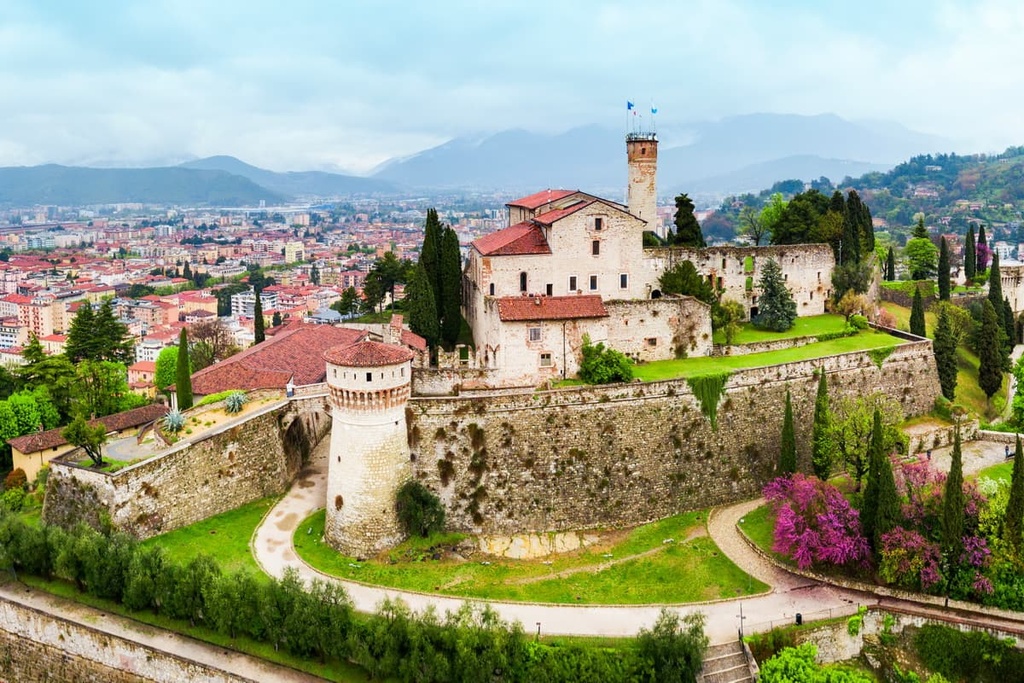
Trento is an educational, scientific, financial, and political center in the Trentino-Alto Adige / South Tyrol region and is one of the finest alpine cities.
Like many old cities, it features its own medieval landmark, Castle Buonconsiglio, which was the former residence of the prince-bishops of Trento from the thirteenth century to the end of the eighteenth century. It is enclosed by fortified walls and positioned slightly higher than the city itself.
If you are an art lover, you can check out the extensive cycle of frescoes (the ‘Cycle of the Months’ is the most famous) that decorate the interior walls of the castle; they were made mainly from the late Middle Ages to the Renaissance period.
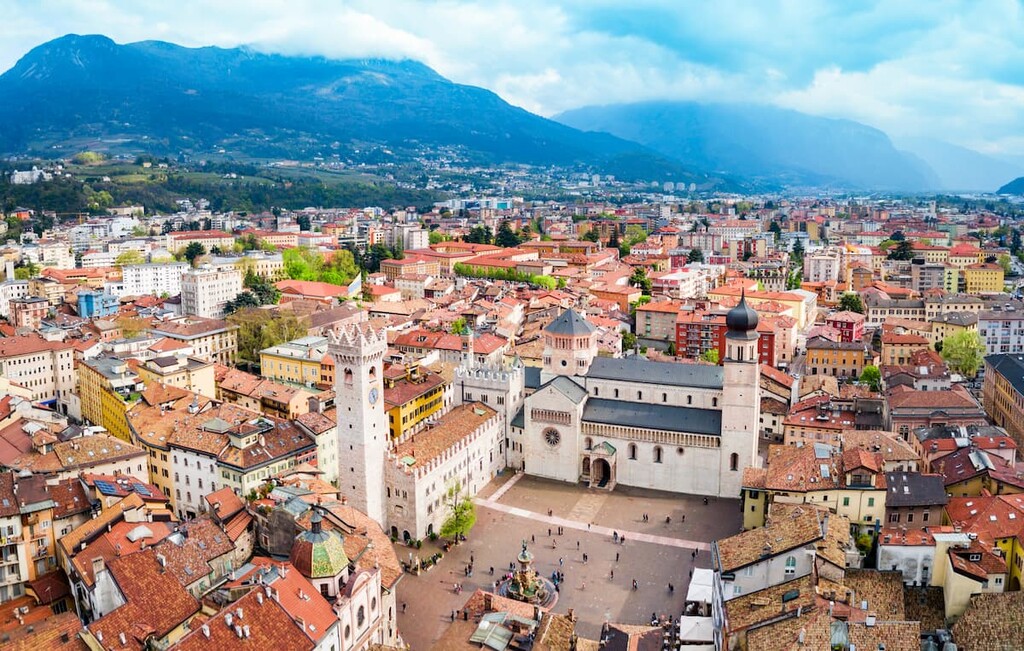
Riva del Garda is a great lakeside resort for those interested in the Dolomites and the Southern Rhaetian Alps. The town has a beautiful historic center, a port, and many sports schools and camps for windsurfing, yachting, and other water sports.
The satellite towns of Arco deep in the Sarca Valley and Nago-Torbole to the east of the historical center are equally worthy of attention. In particular, from Riva to Nago-Torbole, there is a magnificent pedestrian promenade that is 3 km (1.8 mi) long one way.
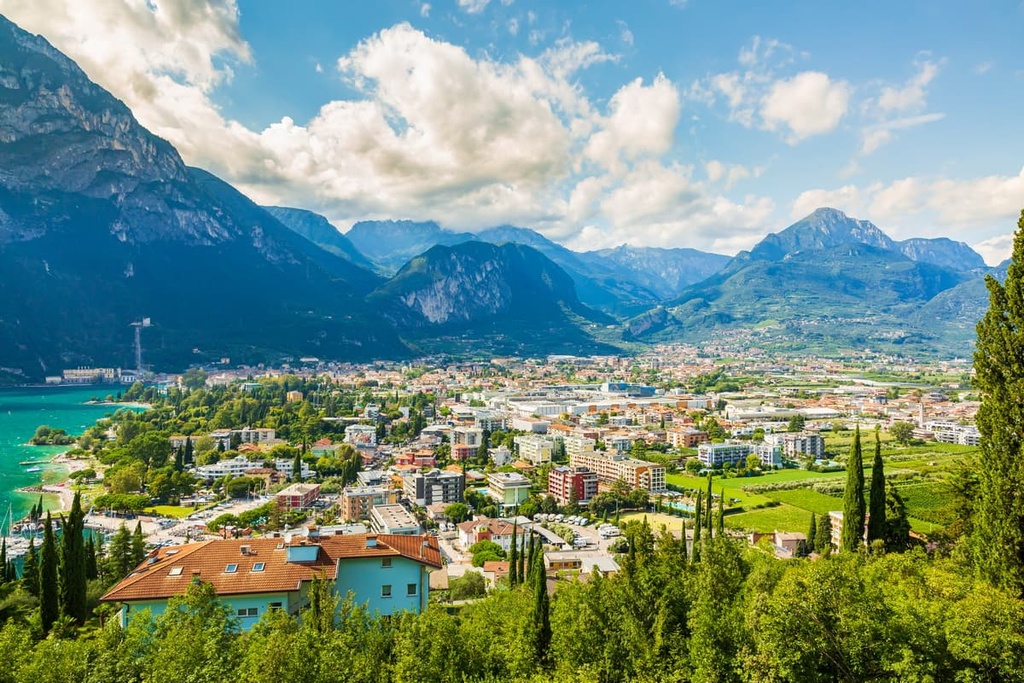
Desenzano del Garda is the largest town on the southern shore of Garda Lake in the province of Brescia. From there, it is convenient to travel both to the eastern part of the lake to Monte Baldo and to the western part to Alto Garda Bresciano Park and other locations.
The community has a small port and beach, however, they are full of people in the summer. So, it is better to come here in mid-season.
The main architectural attractions of the city are the Desenzano Castle (Castello di Desenzano), the Cathedral of St. Mary Magdalene (Il Duomo Santa Maria Maddalena), the Tower of St. Martin (Torre di San Martino), an Archaeological Museum (Museo Civico Archeologico), and several old-style villas (Villa Romana).
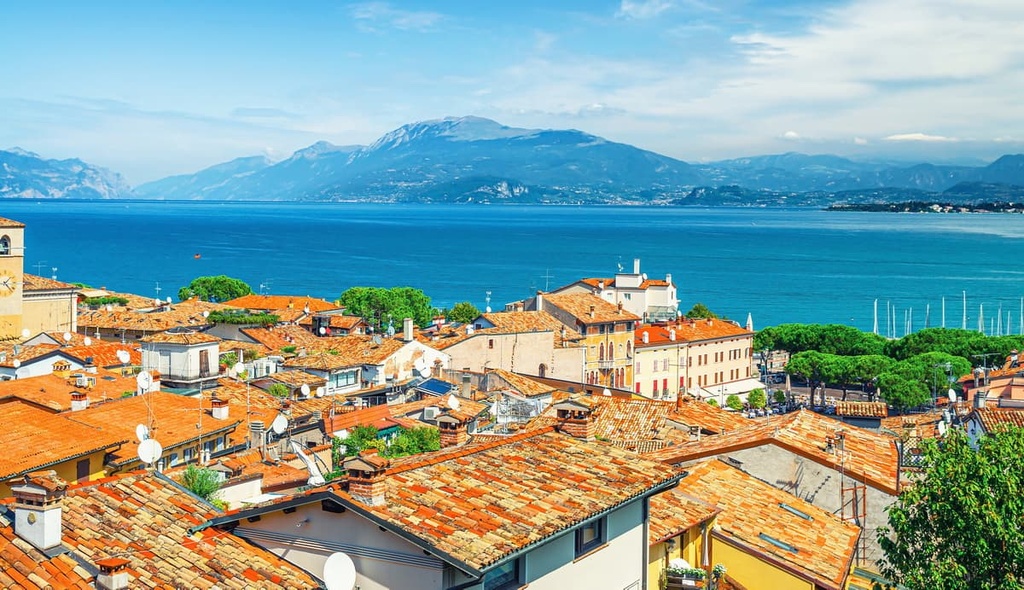
Verona is a city that needs no introduction as it is very well-known, thanks to its famous Juliet balcony, the Arena, and the riverfront of the Adige.
One of the best cities in Italy, Verona features a wide range of landscapes, from the Old Town to the Garda Mountains. Incredible views from the city itself are nearly guaranteed.
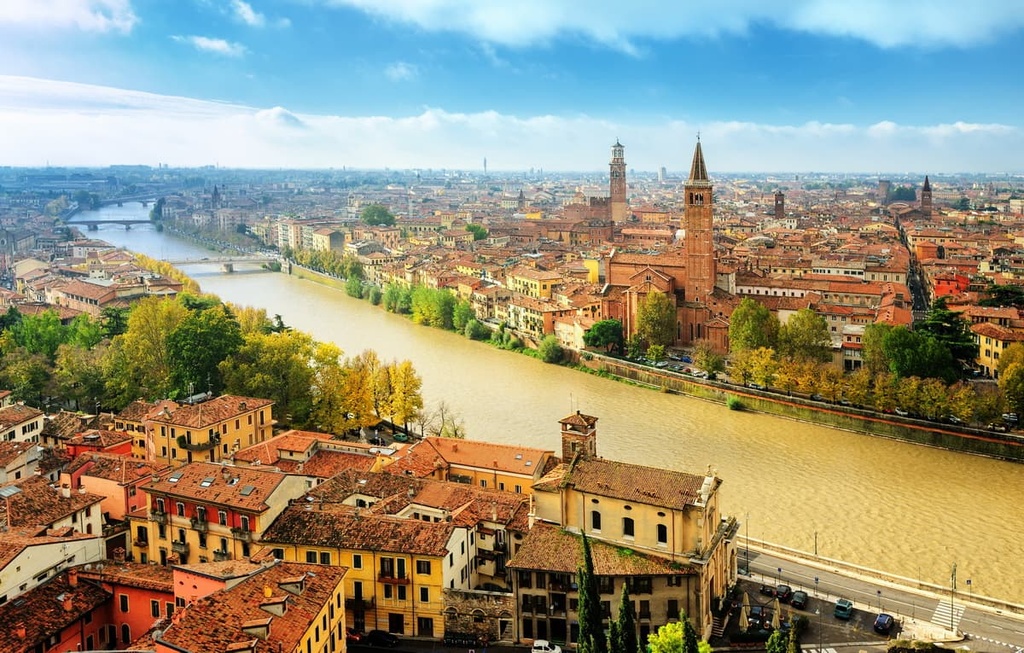
Darfo Boario Terme is a small settlement compared to the above-mentioned cities and towns, but it is the largest in the Camonica Valley. The name includes two towns: Darfo and Boario Terme, respectively. The name of Boario Terme refers to the four mineral springs in the area.
But there is much more to see here, including a series of archaeological parks with Stone Age rock drawings that are UNESCO World Heritage sites (Rock Drawings in Valcamonica). It was the first such site in the Lombardy region. The site was included in UNESCO’s official list of world heritage sites in 1979.
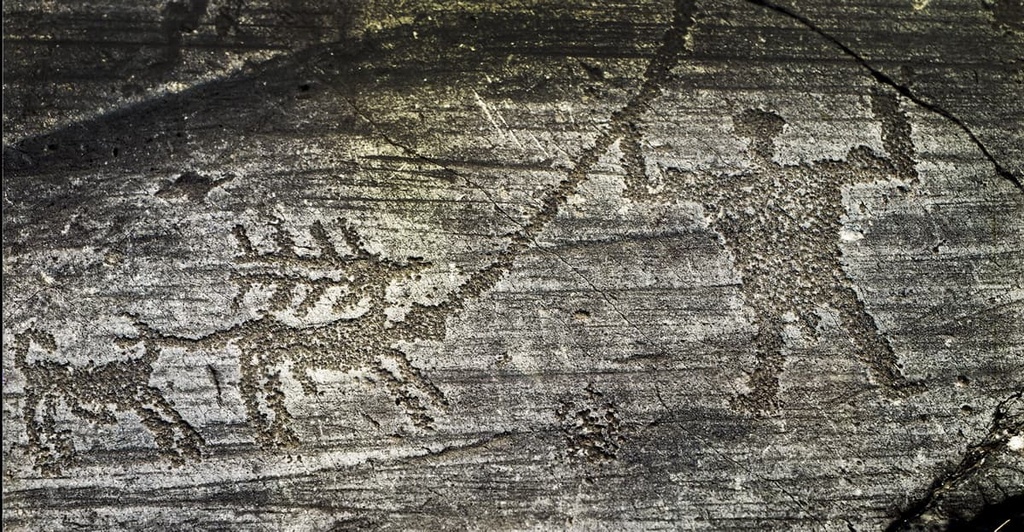
Explore Brescia and Garda Prealps with the PeakVisor 3D Map and identify its summits.

